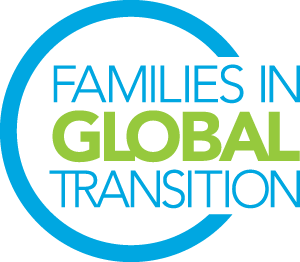By Anastasia Aldelina Lijadi – Vice President FIGT, Acting Affiliate Director
Families in Global Transition (FIGT) is a beacon of support and connection for globally mobile families, offering a range of activities and resources that cater to their unique needs. Over the past two decades, FIGT has expanded its role as a community platform, ensuring that members stay connected, informed, and supported in their journeys. In 2008, FIGT began hosting annual in-person conferences in various cities around the world. In 2019, Bangkok was the last live conference due to the COVID-19 pandemic. Beginning in 2021, FIGT switched to hosting conferences online.
Looking ahead later this year, we encourage FIGT members to mark their calendars for the 2025 FIGT Global Gathering in Chicago, July 25-27. During this event, we will celebrate FIGT founder Ruth Van Reken’s 80th birthday! It promises to be a memorable gathering for members to connect and mark this special moment. Members are invited to register for the event, prepare to share their own experiences, and participate in the celebrations.
Staying Connected and Engaged
FIGT keeps its individual and business members informed with dynamic updates via dedicated WhatsApp groups. This ensures everyone stays connected and up-to-date with the latest news and opportunities. Members can engage by actively participating in the group, sharing their own updates, and taking advantage of the information shared. For business members, FIGT has introduced quarterly virtual networking sessions that offer a platform to connect, inspire, share, and collaborate, creating new opportunities for professional growth and development. These sessions foster deeper connections within the FIGT business community as members can share their experiences and seek out potential collaborations.
FIGT also hosts “Coffee and Connect” gatherings in virtual settings, allowing members an opportunity to catch up, share experiences, and build relationships in a relaxed, informal setting. Such gatherings are a testament to FIGT’s commitment to fostering a strong sense of community among its members. When members attend these gatherings, they bring their own stories and experiences to share and make new connections.
Recognizing the need for additional resources, FIGT also organizes quarterly “Let’s Talk” virtual sessions with diverse topics, offering an opportunity to exchange insights and have conversations guided by experts in the topics. Members are welcome to attend these sessions, ask questions, and apply the insights gained to their own needs.
One of the standout initiatives is the weekly “Shut Up and Work” sessions, which are held online every Wednesday. These sessions provide dedicated time for members to focus on their own tasks in a supportive virtual environment, fostering productivity and a sense of community. Members can join the sessions and use the time to tackle their to-do lists while feeling part of a collective effort.
Active Affiliates
In addition, FIGT’s regional affiliate groups and topic-focused community clubs also organize a variety of seminars, workshops, and casual gatherings. FIGT currently has affiliate groups in Australia and New Zealand (ANZA), Greece, Japan, Korea, the Netherlands, Spanish-Speaking regions, and the United Kingdom where members can connect online or via in-person gatherings. These events cover a wide range of subjects relevant to globally mobile families, providing valuable insights and fostering ongoing dialogue and community.
The FIGT Australia and New Zealand (ANZA) affiliate has been especially active, hosting events such as a talk by Deborah De Cerff on the benefits, achievements, and legacies of global mobility network organizations. Deborah, founder of The Employee Mobility Institute (TEMi), shares how TEMi and similar establishments drive impact and celebrate excellence in global mobility. Another notable event was an online seminar led by Miki Brooks on the challenges faced by Third Culture Kids (TCKs) and their families in navigating multiple cultures. This seminar shared practical strategies for managing long-term, cross-cultural living. FIGT ANZA also hosts the popular Global Mobility Author Webinar, featuring seven authors discussing six books. This event provides a variety of perspectives on global mobility and is recorded for those unable to attend live.
In September 2024, the FIGT Greece affiliate hosted the 3rd European FIGT Meetup in Athens after the successful regional gatherings in Barcelona (hosted by two FIGT members in 2022) and in The Hague (hosted by FIGT Netherlands in 2023). Regional gatherings offer a unique opportunity to meet fellow FIGT members within the region, share information, and seek collaboration opportunities. Open to affiliate members as well as FIGT members, people are invited to share personal stories and experiences, highlighting the deep connections and friendships formed through the organization. These stories underscore the importance of community and support in the globally mobile lifestyle.
The FIGT Counselors & Coaches affiliate has monthly Zoom meetups, which provide a platform for clinicians, counselors, and coaches to connect and share insights. This initiative, established in 2018, serves as a platform for communication, connection, and collaboration among counselors and coaches within the FIGT community. In the November 2024 session, for example, the gathering focused on ADHD and supporting long-term expats. The Counselors & Coaches affiliate collaborates closely with the FIGT ANZA Affiliate to reach out to members in the Asia-Pacific region, ensuring that support and resources are accessible to a wider audience.
The FIGT Japan affiliate will celebrate their five-year anniversary with FIGT with an upcoming event in March 2025, featuring a panel of Japanese adult third culture kids (“kikokushijo”) in their 20s to their 60s. The event will be bilingual, in Japanese and English, targeted to the local TCK and expatriate community in Tokyo.
Connecting Through Networks, Clubs, and Communities
The FIGT Research Network recently hosted discussions on TCK experiences from the Global South and childhood mobility in post-colonial Asia and Africa. Such discussions provide valuable insights into the unique experiences of these individuals and contribute to the broader understanding of global mobility.
The FIGT Book Club is another terrific initiative that fosters community and connection among FIGT members. Monthly virtual gatherings offer a chance for members to come together and discuss various books, sharing their thoughts and insights in a friendly, engaging environment. The book club provides not only an opportunity to explore different perspectives on global mobility and related topics, but it also helps members build deeper connections through shared literary experiences. FIGT members can join the monthly book club gatherings, read the selected books, and actively participate in the discussions. This is a great way to connect with others who share similar interests, gain new insights, and contribute to the vibrant FIGT community. Whether you’re an avid reader or just looking to connect with fellow members, the FIGT Book Club offers a welcoming space for meaningful conversations and personal growth.
The FIGT Parenting Community is also a vital part of the organization, offering frequent seminars on various parenting topics, including anxiety, transitioning to university, and more. These seminars provide valuable insights and practical strategies for parents navigating the complexities of raising children in a globally mobile environment. During these seminars, FIGT members can join in the discussions and apply the knowledge they gain to their own parenting challenges.
In addition to these many ways to connect, FIGT also welcomes members who are conducting research projects on phenomena related to global mobility and Third Culture Kids.
Ongoing Active Support
FIGT continues to be a vital resource for globally mobile families, offering a wide range of activities and initiatives that foster connection, support, and growth. Whether through virtual events, local affiliates, or ongoing communication efforts, FIGT remains committed to supporting its members in navigating the complexities of global transitions. By actively participating in these activities, members can maximize the benefits of their FIGT membership and build a strong, supportive network.
About the author:
 Anastasia is deeply involved with FIGT, serving as its current Vice-President and as Research and Education Director from 2019-2022. An Indonesian Psychologist renowned for her work on Third Culture Kids (TCKs), she pursued her doctorate at the University of Macau and received awards from the International Institute of Qualitative Methods and the International Congress of Psychology. She is the Associate Editor of The International Journal of School & Educational Psychology and contributes to the Journal of Psychological Research. Her research was featured in the book "TCK: The Experience of Growing Up Among Worlds". Currently residing in Austria, she's raising two TCKs and working on developing new human well-being indicators.
Anastasia is deeply involved with FIGT, serving as its current Vice-President and as Research and Education Director from 2019-2022. An Indonesian Psychologist renowned for her work on Third Culture Kids (TCKs), she pursued her doctorate at the University of Macau and received awards from the International Institute of Qualitative Methods and the International Congress of Psychology. She is the Associate Editor of The International Journal of School & Educational Psychology and contributes to the Journal of Psychological Research. Her research was featured in the book "TCK: The Experience of Growing Up Among Worlds". Currently residing in Austria, she's raising two TCKs and working on developing new human well-being indicators.

